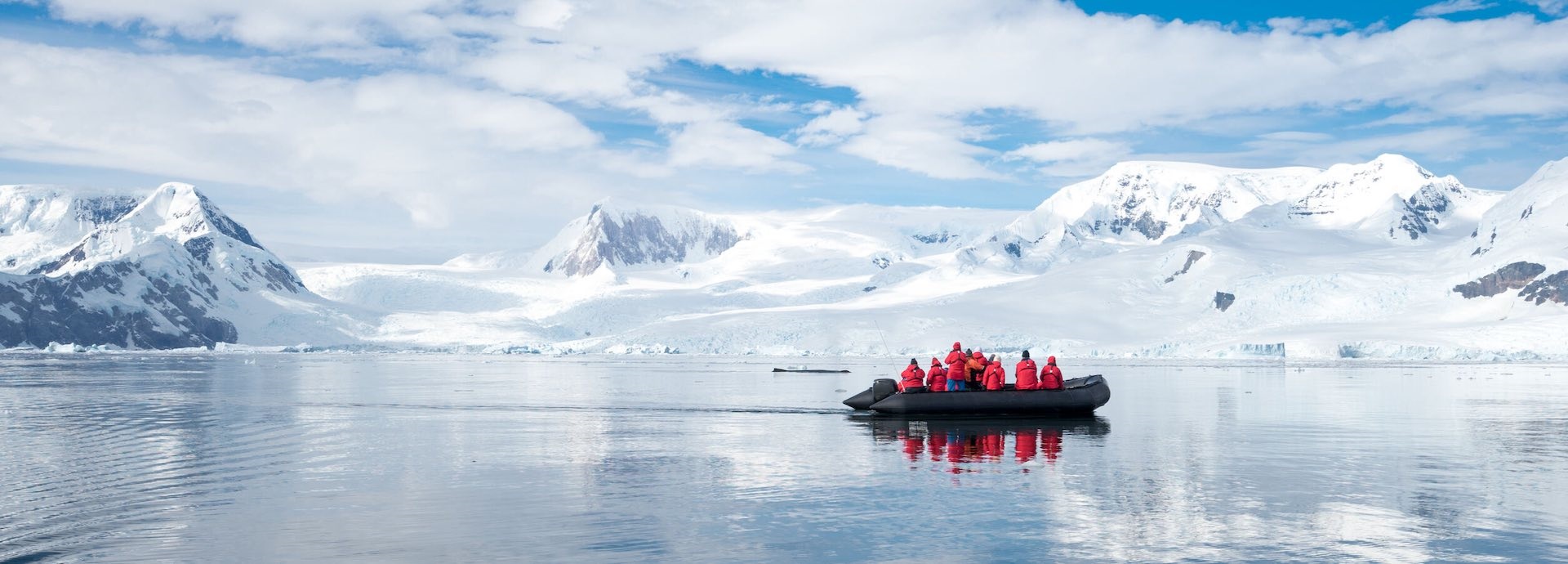

Could establishing the world’s largest Marine Protected Area in the Weddell Sea be a huge step towards solving climate change?
Home to nearly 10,000 different species, the Southern Ocean remains one of Earth’s most pristine and least understood places. Surrounding Antarctica and stretching up to the 60th degree of latitude, it connects three of the world’s oceans and is at the forefront of marine conservation and climate change.
Scientists have been working for decades to establish a series of Marine Protected Areas (MPA) – sections of the ocean where there are limits on human activity – in the Southern Ocean.
Two have already been formally established by the Commission for the Conservation of Antarctic Marine Living Resources (CCAMLR) in the South Orkney Islands and the Ross Sea. A third was agreed in principle in 2012 and is awaiting formal designation.
Advocates argue that the proposed Weddell Sea MPA, which would be the world’s largest, is vital to understanding how climate change is affecting the oceans and conserving a marine environment about which scientists know very little.
Protecting an ‘extremely unique’ region
“It’s an extremely unique region,” says Jakob Granit, the Swedish chairman of CCAMLR – a treaty organisation formed in 1980 and composed of 25 member nations and the European Union – until the end of 2022.
“There's a global connection here,” he adds. “The largest ocean current in the world circumnavigates the Antarctic region and connects all five global oceans. It transports heat, nutrients and provides a breeding and feeding ground for fish.”
For these reasons, Claire Christian, the executive director of the Antarctic and Southern Ocean Coalition, an NGO that is an observer to CCAMLR, believes that formally designating the MPA at the 2022 CCAMLR session in Hobart, Australia, is paramount.
“All the science is telling us that if we set this area aside now, we're going to be able to achieve our goal of conserving Antarctica in the long term,” she says. Christian believes the Weddell Sea MPA would provide humanity with tangible and intangible benefits. She argues that MPAs serve as a sort of scientific control to understand better how fishing and warming temperatures impact the Antarctic.
“We've had such an explosion in scientific knowledge about the ocean over the past few years, we kind of kid ourselves into thinking we understand it now,” she says. “However, there are still big gaps in our understanding of how things work down there. That’s another great reason for an MPA.”
Intact ecosystems are more climate-resilient
Chief among these gaps is the role of the Weddell Sea and wider Southern Ocean in sequestering carbon and mitigating the impacts of climate change.
“More intact ecosystems are more resilient to climate change and have a better ability to bounce back,” says Minna Epps, the International Union for Conservation of Nature’s (IUCN) global marine and polar programme director.
Epps argues that establishing the Weddell Sea MPA and classifying it as a no-take zone would play a key role in protecting the seafloor from deep-sea fishing trawlers. An unspoiled ocean floor would also aid researchers in better understanding the role oceans are playing as the climate changes.
“The seabed floor is one of the largest carbon sequesters in the world,” she says. “So that means that if you create an MPA, which is strictly no-take, that will have positive benefits in terms of leaving that carbon storage intact.”
She adds that no-take zones help regenerate fish stocks, making adjacent commercial fisheries more sustainable. According to Christian, no-take zones also help scientists better understand the many long-lived and slow-growing fish species native to Antarctic waters.
Despite the many benefits of MPAs, the concept is not universally embraced – which makes establishing them very difficult.
CCAMLR is responsible for establishing and formalising MPAs. A consensus is needed for either one of these to occur, which can be difficult when different interests are at play.
“Of late, there have been more tensions arising around establishing MPAs,” says Granit. He points to the need to balance tourism, fishing, research and conservation interests.
However, he adds that the establishment of the Weddell Sea MPA is part of a process that has been evolving since 1959 when the Antarctic Treaty was first signed.
“Over time, there is nothing that shows that CCAMLR and the Antarctic Treaty have failed,” says Granit.“ It is doing its job, but maybe it could go faster. We may all wish that, but the reality is it takes time to reach consensus when many interests are at play.”
The role of private business
Since their introduction in 2016, Wärtsilä has enthusiastically adopted the United Nations Sustainable Development Goals (SDGs). Among these is the company’s commitment to enhancing a smart and low-carbon marine ecosystem.
Epps believes the private sector has a big part to play in marine conservation – not only in achieving the IUCN’s goal to protect 30 per cent of the oceans in the form of MPAs by 2030 but also the broader goal of protecting all oceans.
“We might need to protect 30 per cent of the ocean, but we need 100 per cent sustainable use,” she says. “So, it's really that other part of the ocean that we need to manage sustainably as well.”
“We need to remove the threats, help build resilience and enhance recovery,” Epps concludes. “The private sector has a big role to play there.”
Did you like this? Subscribe to Insights updates!
Once every six weeks, you will get the top picks – the latest and the greatest pieces – from this Insights channel by email.

